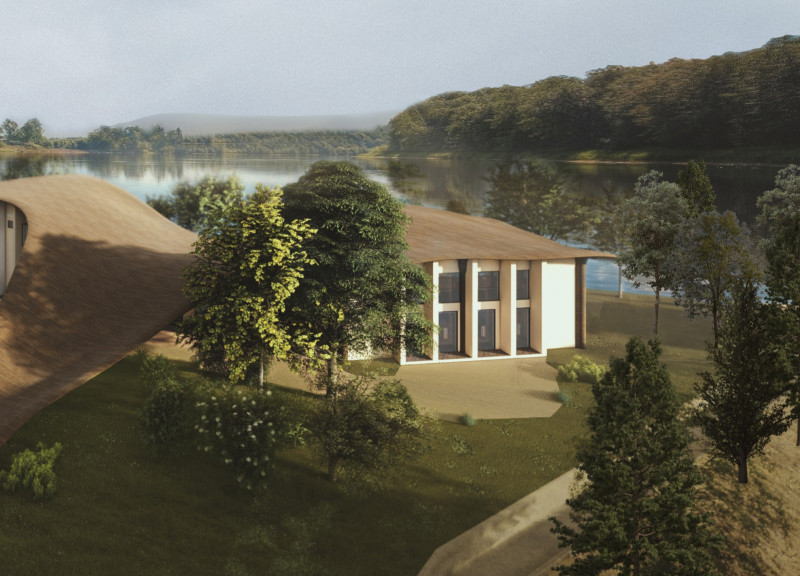5 key facts about this project
The design integrates human living spaces with a habitat for local bat populations. Situated by a tranquil lake, the project emphasizes the idea of coexistence, creating an environment that serves both people and wildlife. Through thoughtful planning and design, it aims to support the needs of occupants while enhancing the local ecosystem.
Structure and Form
A prominent feature of the design is the timber gridshell roof. This roof not only adds visual interest but also provides nesting spaces for bats. It floats above three separate program areas, allowing natural light to fill the interior. The double-height studio faces the lake, maximizing views and allowing a strong connection between indoor and outdoor spaces. This focus on openness invites occupants to engage with nature.
Spatial Arrangement
The arrangement of the buildings shows careful deliberation, with each element intentionally placed to offer clear sightlines to the lake. By positioning the structures within existing clearings, the design reduces impact on the environment and maintains the area's natural character. This thoughtful layout creates a peaceful atmosphere where inhabitants can enjoy the landscape while supporting local wildlife.
Materiality
Materials include Cross-Laminated Timber (CLT) panels, which support a sustainable approach using renewable resources. Concrete masonry is utilized for durability, while moisture-resistant sheets protect key areas from the elements. Glue Laminated Timber (glulam) is used in the structural framework, providing strength and flexibility. The combination of these materials reflects a commitment to practical and environmentally conscious building practices.
Environmental Integration
The design encourages interaction with the surrounding environment. The connected roof offers shelter and makes movement between spaces easier, enhancing the experience for both humans and bats. A specific feature of the roof is its C-shaped descent at one corner, designed to shield against wind. This detail not only enhances comfort but also contributes to a harmonious relationship with the natural surroundings.






















































